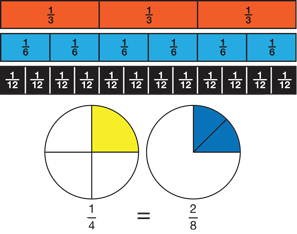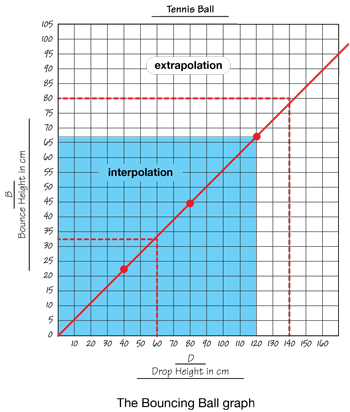E
equation
A true number sentence can also be called an equation because the amounts on both sides of the equal sign are the same.
pages 132–135
equilateral
A shape with all sides and all angles equal.

pages 283–284
equivalent
The same as or equal to.
pages 64–68, 76–79, 216–220, 238–239, 461, 465, 518–525, 526–536
equivalent fractions
Fractions that represent the same part of the whole. For example, 





pages 64–68, 76–79, 216–220, 238–239, 461, 465, 518–525
equivalent ratios
Ratios that are equal or represent the same number.
pages 216–220, 238–239, 465, 518–525, 526–536
estimate
1. (verb) To find about how many.
2. (noun) An approximate number.
pages 5–8, 40, 86–88, 89–90, 100–104, 108–110, 136–143, 153, 156, 161–163, 201–202, 273, 294–297, 306–309, 335–338, 402, 406–408, 417–418, 458–459, 470–472, 479, 501, 516, 559, 577, 580–581
expanded form
A number shown expanded into its place value parts. For example: 423 = 400 + 20 + 3. The examples show how to use expanded form to add, subtract, and multiply.

pages 122, 124–128, 133, 167–168, 175–176, 370–373, 407, 416
exponent
The number of times the base is multiplied by itself. In 34 = 3 × 3 × 3 × 3 = 81, the 3 is the base and the 4 is the exponent. The 3 is multiplied by itself 4 times. (See also base.)

pages 144–155, 443–445, 446–448
extrapolate (extrapolation)
Using patterns in data to make predictions or to estimate values that lie beyond the range of values in the set of data. (See also interpolate.)

pages 521, 545, 549, 555










